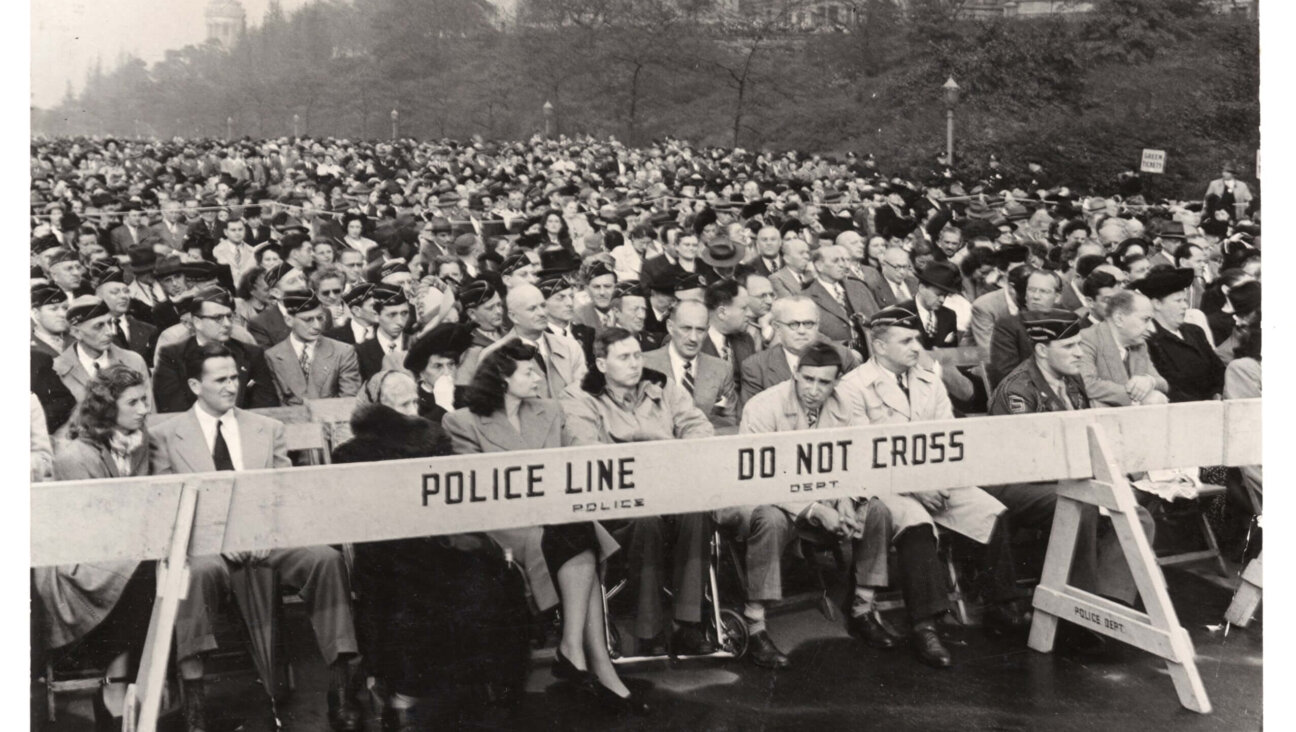Language Lover Gets Back to His Roots
HebrewTalk: 101 Hebrew Roots and the Stories They Tell
By Joseph Lowin
EKS Publishing Company, 220 pages, $27.95.
* * *|
Joseph Lowin comes from a long line of lovers of the Hebrew language — from medieval grammarians Menahem ben Saruk, Dunash Ben Librat, ben Hayujj and ibn Janakh, who invented Hebrew grammar, and the early modern Hebrew belletrists, who reinvented a Hebrew prose and poetry style through the use of biblical, then rabbinic, Hebrew; through Eliezer Ben Yehuda, “founder” of modern Hebrew, and New Yorker Daniel Persky of my parents’ generation, teacher and connoisseur nonpareil of the language.
This season, Lowin, a scholar of languages who served as director of the National Center for the Hebrew Language until its 2005 demise, brings us “HebrewTalk: 101 Hebrew Roots and the Stories They Tell,” a sequel to his 1995 offering, “Hebrewspeak: An Insider’s Guide to the Way Jews Think” (Jason Aronson). “HebrewTalk,” a collection of Lowin’s columns on Hebrew words from Hadassah Magazine over some two decades, is an accessible — indeed folksy — bridge between biblical and rabbinic Hebrew and the mimetic language of ordinary speech in Israel today. In it, Lowin examines 101 Hebrew verbal roots, and, through the use of insightful and entertaining — some truly enchanting — examples, explores the approach to word- and concept-building peculiar to Hebrew. And it is the wonderful conceit of “HebrewTalk” and “Hebrewspeak” that these 101 treatises-in-miniature they talk and speak to those interested in Hebrew, at whatever level of competence in the language.
Let’s start with an example. Take “’a-tz-m,” a root meaning variously “strong,” “numerous,” “core.” Lowin asks (and answers), “Whence “Yom Ha’atzma’ut” [Israel Independence Day]?” From this point, he takes us from “the core of the matter” (’etzem ha’inyan), through the modern Israeli usage for “the self-employed worker,” to the biblical formulation for rapid demographic growth (“vaya’atzmu”) and Ezekiel’s “dry bones,” and ends up, “b’etzem” (as a matter of fact), with personal identity and personal strength. Finally, of course, is the word for “noun” itself, “shem ’etzem.”
“’Atzum!” (“Terrific!”) I shout.
To be sure, there are some missteps in Lowin’s generally meticulous scholarship. In his discussion of “ch-l-tz,” a root suggesting the physical acts of removal and uprooting, there appears to be confusion over the word for “corkscrew.” My recollection is that the “Akademia” — the creator of new words and the arbiter of Hebrew lexicography — has “machletz,” and not “choletz,” as Lowin has it, and that is how the word is appropriately used. (A “choletz” is pliers used to remove nails; another meaning: when a levirate marriage cannot take place, the choletz is the one who performs the Jewish ritual chalitza ceremony.) But then again, the rules of lexicography are descriptive, not prescriptive — as are those of grammar — and, as Lowin repeatedly teaches us, usages do evolve. And “ch-l-tz” and “’a-tz-m” are good examples of a fundamental principle of Semitic philology, which Lowin clearly gets: Hebrew words had their origins in the concrete and physical world. Only later did derivations of a given root take on the abstract meanings that they display in subsequent usage. I wish that Lowin had articulated this idea explicitly; it is at the center of what Hebrew word-building is all about.
The most glaring omission is an intelligent and intelligible discussion of the (literal) root of the book, indeed of Hebrew itself: the “shoresh,” the Semitic/Hebrew root, which is a concept historically and psychologically strange to speakers of Indo-European languages. But these minor gaps are outweighed by the book’s many strengths. And all readers — beginner to advanced — will find value in his bibliography; the very quirkiness of the books cited talks to the strength of “HebrewTalk.” Few Americans — even those who have lived in Israel and who are well versed in the language — know of Ruth Almagor’s idiosyncratic “Rega shel Ivrit” (“A Moment of Hebrew”) or of Ruvik Rosenthal’s wonderful “Ha-Zirah ha-Leshonith” (“The Language Arena”), which addresses a wide array of unexpected topics in the language-as-Israeli-culture arena. (Rosenthal’s book, however, will be only marginally intelligible to the average — even the above average — American Hebrew speaker. And yes, there is also a dictionary in Lowin’s bibliography; but I for one appreciated being alerted to the more entertaining and quirky volumes that flesh out the bones of Hebrew.
Philology, etymology and (dare I suggest?) homiletics all come together in Lowin’s tour de force. “HebrewTalk” will teach, delight and engage readers young and old, beginners and completely fluent. There’s a lot of lehem (bread? meat? Lowin will explain!) here, with more than a touch — kamtsuts (now there’s a word!) — of good fun.
Jerome A. Chanes, a Forward contributing editor, most recently wrote “Antisemitism: A Reference Handbook” (ABC-CLIO, 2004). He teaches biblical Hebrew, Jewish sociology and public-policy issues at the college and university level, and is an author and editor of the forthcoming revision of Encyclopedia Judaica.

I hope you appreciated this article. Before you go, I’d like to ask you to please support the Forward’s award-winning journalism this Passover.
In this age of misinformation, our work is needed like never before. We report on the news that matters most to American Jews, driven by truth, not ideology.
At a time when newsrooms are closing or cutting back, the Forward has removed its paywall. That means for the first time in our 126-year history, Forward journalism is free to everyone, everywhere. With an ongoing war, rising antisemitism, and a flood of disinformation that may affect the upcoming election, we believe that free and open access to Jewish journalism is imperative.
Readers like you make it all possible. Right now, we’re in the middle of our Passover Pledge Drive and we need 500 people to step up and make a gift to sustain our trustworthy, independent journalism.
Make a gift of any size and become a Forward member today. You’ll support our mission to tell the American Jewish story fully and fairly.
— Rachel Fishman Feddersen, Publisher and CEO
Join our mission to tell the Jewish story fully and fairly.
Our Goal: 500 gifts during our Passover Pledge Drive!























